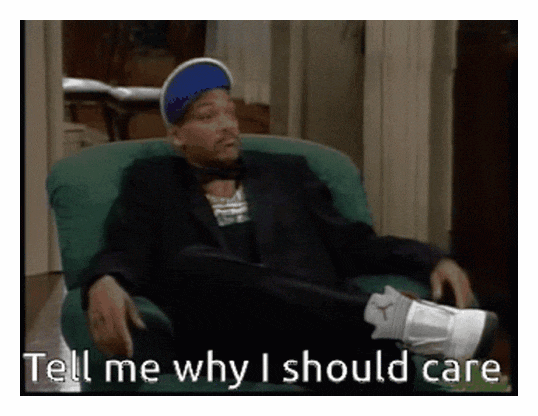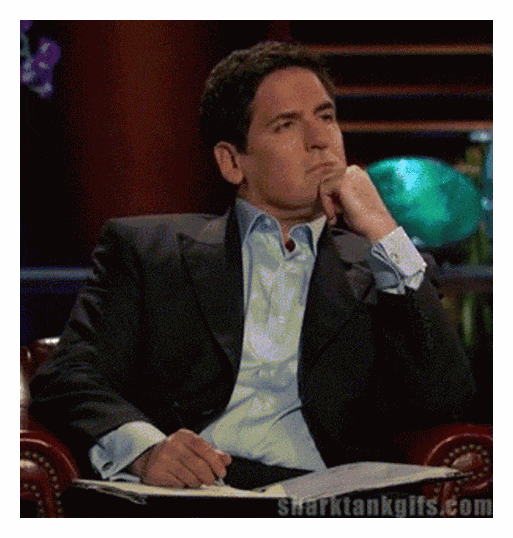If you're reading this, chances are that you are somewhat interested in this thing called Web3. Everyone is talking about it, tweeting about their blockchain predictions, and releasing podcasts on all sorts of blockchain trends.
The web we're so used to right now was not the same a decade ago. It certainly won't be the same in the next 10 years. How is the internet evolving, and more importantly - where is it headed to?
Also, what is all this fuss about and why should we care about these blockchain trends? 🤷♂️

Key Takeaways:
The blockchain is not about replacing the current internet. It is complementing the internet as we know it with a few added characteristics.
Early versions of a new digital world are already here. Metaverse is a vision into this not-so-distant future.
We can see glimpses of this new internet with tokenization of data on a scale in Verida or an NFT led creator economy of RTFKT.
The future of Web3 is ambiguous. Right now, the blockchain offers a lot of promises under its decentralization umbrella. However, there's every chance of monopolies emerging from it as the previous internet generations.
Web3 is facing scathing criticism. It has been labeled as a pyramid scheme, a blockchain solution looking for a problem, or a false narrative of bringing power back to people.
So let's dive in, shall we? 🏊♂️
A bit of a Web history lesson.
The term WorldWideWeb was coined in 1990 by Tim Berners-Lee. It was a foundation to the internet age which is now seen as Web 1.0. Its purpose was straightforward. It allowed scientists to publish papers and gave access to these papers for people at universities.
By the end of 1999, the Web 2.0 phase came about, which wasn't a groundbreaking upgrade to the existing web but more like sanding off the rough edges of Web 1.0. It enabled creating web pages without a lot of technical background and as a result, more and more people joined the webspace creating forums, blogs in large numbers.
It was termed social web or participatory web. Web 2.0 also led to the rise of big platforms such as Facebook/Meta or Google which thrived on this user-generated data.
Motivation towards building a Web3.
With the rise of corporations, the web community felt a betrayal of the values and promises of the early internet. The big platforms are making more money than ever and are seemingly untethered to the laws, enjoying a sort of total power over the internet.
When Facebook decided to change its name to Meta, it took down the Instagram handle of metaverse which was owned by an Australian artist and technologist Thea-Mai Baumann over impersonation.
Like any other major change, the drive for Web3 change is coming from multiple sources.
Artists and creative spaces aim to create a stable income source through selling NFTs, while the blockchain community is pushing for an internet based on the idea of decentralization.
All this has led to Web3 becoming a phenomenon rather than simply an idea for the future.
So what is the blockchain?
A bit overwhelmed? Let's sum it up. ✍️

The blockchain is an infrastructure based on top of the pre-existing internet network, intending to change the face of the web into a more decentralized and individual entity.
The front end of Web3 apps is browser-based, with the major difference of getting data from a decentralized blockchain rather than centralized servers.
So to sum it up, using the blockchain, you can write a comment on a blog, but instead of living on a central server, that comment will live on a blockchain and it will be attached to your Web3 identity. Meaning it can never be fully deleted even if the original blog post gets removed somehow.
The blockchain predictions.
Now as promised, let's look at what the future holds for blockchain and this new, radical rethink of the Web.
1. Establishment of Virtual Worlds
A virtual world based on real-world experiences. That's Metaverse. 🤖
If this pandemic has taught us anything, it's that humans as a species are extremely adaptable.
Building a digital world or Metaverse, such as Decentraland, is a step further in that adaptation. All these digital worlds have a thing in common, they mimic some facet of the real physical world.
Like Decentraland, incentivized users buy and sell virtual real-estate while they play games within this same virtual world. This led to multiple corporations joining the metaverse by buying out land in this virtual world.
2. Tokenization of Everything
Making everything uniquely linked with an identity to state real ownership. 🪙

A blockchain token represents an asset, and the Web3 community loves tokenization. Be it a domain, a blog post, an account on a platform. Everything is a token. Everything has an address on the blockchain.
Eventually, the tokenization will be moving to the real world by creating a token akin to a physical entity such as real estate by platforms like Propy.
3. Democratization of Wealth
With virtual assets, the gatekeeping of wealth instruments is set to vanish. 💰
Economics and finance have always been fields controlled by a small set of people due to the general complicated nature of these subjects.
With the onset of Web3, everyone will have greater participation in digital economies.
Digital assets such as NFTs, tokens will eventually be owned by everyone. Investing will become a primary source of income resulting in greater class mobility throughout the digital world.
4. Revolutionizing the Creator Economy
A new chapter is set to begin in the creator economy space with the rise of the blockchain. 🎨
A direct creator-to-fan network has been fuelled by new-age platforms such as Patreon, Twitch, Substack and Discord.
This is only the beginning, as Web3 or Metaverse will be making extended reality(XR) more accessible to the masses, creating an even bigger reach for the creators.
In December 2021, Nike brought RTFKT, which makes virtual sneakers and NFTs. We can bet on more such acquisitions to take place as brands look for creatives to lead the next charge of growth.
5. Changing the Future of Work
Decentralized Autonomous Organizations(DAOs) are the future of work. 🧑🏭

A decentralized autonomous organization(DAO) is an entity without a central authority. Its decisions are taken from the bottom-up by a community rather than a board of directors or a CEO of a company.
An example of DAO is Radicle which allows stakeholders to actively participate through a governance mechanism like Everest.
DAOs are set to take the center stage with Web3, as it turns the idea of a company on its head, giving large ownership to the stakeholders in a way that was not possible in the past.
The Blockchain problem.
Currently Ethereum uses about the same amount of electricity that the Netherlands uses due to its Proof of Work consensus algorithm.
Okay, so you made it this far. Not everything is rosy in the Web3 world. Despite the mass appeal that blockchain is leveraging, the criticism for this radical new idea has been scathing.
Many have dubbed Web3 as an attempt to find a use case for blockchain, where people from the community are pushing for decentralization with the motive of establishing a global adoption of this technology.
The debate on NFTs, being a legitimate art form is an ongoing one. The ownership of an image in a digital world is still unclear as people can simply right-click the image, download it and claim ownership over it.
The origins of the blockchain stem from the opposition towards monopolies. However, this space at present has become a playground for VCs where investors like Andreesen Horowitz are pushing the narrative hard.
The biggest of them all is the environmental impact. The amount of energy being used in blockchain, be it from renewable sources, is indefensible if it stakes the future of the planet.
Conclusion

The modern web is not ideal. The imbalance of power, monopolies, inequality are all evident.
The blockchain-based Web3 is not a utopian vision but a step in the right direction. More and more people are now transitioning into this space making it a hotbed for innovation for years to come.
Perhaps the best way to predict the future of the blockchain and Web3 simultaneously will be to BUIDL it after all. 🚀
This blog is a part of Hashnode Web3 where a team of curated writers are bringing out new resources to help you discover the universe of Web3. Check us out for more on NFTs, blockchains and the decentralized future. 😁

